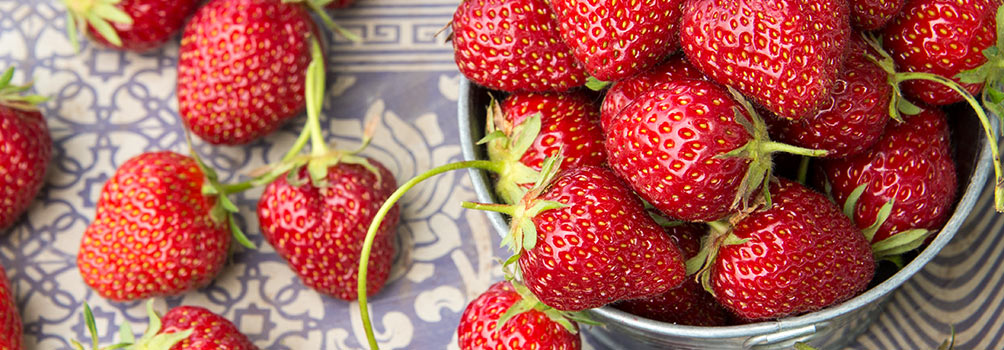 Few things trigger pleasant memories like a handful of plump, juicy strawberries. Their appeal doesn’t stop with taste, though. A perennial garden favorite, strawberries also offer pretty white flowers and unique foliage, making them perfect as a ground cover. They’re affordable, too; a well-maintained strawberry patch offers harvests year after year at very little cost.
Few things trigger pleasant memories like a handful of plump, juicy strawberries. Their appeal doesn’t stop with taste, though. A perennial garden favorite, strawberries also offer pretty white flowers and unique foliage, making them perfect as a ground cover. They’re affordable, too; a well-maintained strawberry patch offers harvests year after year at very little cost.
Two varieties of strawberries are readily available to the home gardener: everbearing and Junebearing. Everbearing strawberry plants produce two crops the first year they’re planted; the first crop of each year matures in late spring and is followed by a second, smaller, crop in the fall (plus a few fruits in between). These strawberries are typically snack-sized berries, and the plants do not produce as many runners. If you’re looking for an everbearing, I recommend Ozark Beauty.
Junebearing strawberries are planted in the fall, and produce one large harvest in late spring or early summer the following year. Although they need more time to mature than everbearers, Junebearers produce larger fruit that is superior in taste and color. Jam-making gardeners love them because the plants set all their fruit at once. Note: You can plant Junebearing varieties in the spring and the plants will produce a few flowers. You should remove all flowers before they fruit, however; it is more important that Junebearers focus on growing larger as plants instead of producing fruit during the first year. If you’re interested in planting a Junebearing strawberry plant, I recommend Gurney’s Whopper Junebearing Strawberry and Jewel Junebearing Strawberry.

